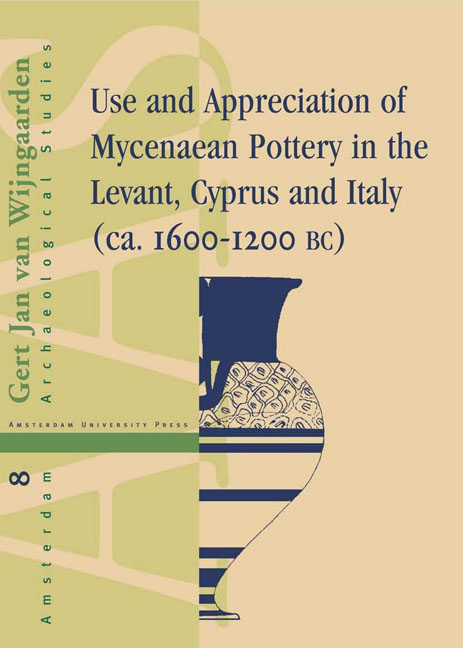3 - The archaeology of Trade and Consumption
Published online by Cambridge University Press: 10 February 2021
Summary
INTRODUCTION
The wide distribution of Mycenaean pottery in many areas of the Mediterranean may be the result of various processes. As has become clear from the discussion in chapter 1, there is little evidence for Mycenaean colonisation on a significant scale. Nevertheless, it is conceivable that Aegean traders or travelling craftsmen deposited personal ceramic possessions in places that they visited, for example as votives in foreign temples. It is also possible that visitors to the Aegean took back pots and figurines as personal souvenirs. However, the quantities of Mycenaean pots at many places in the Mediterranean are too large to be explained in this way. I consider the bulk of Mycenaean pots in overseas areas to be the result of exchange processes.
APPROACHES TOWARDS ANCI E NT T RADE AND CONTACT
Trade is a concept used by archaeologists ever since objects turned up in excavations that were similar to archaeological artefacts elsewhere. In the 19th and early parts of the 20th century, changes in material culture were generally seen as the result of the arrival of newcomers. Thus, the presence of Late Minoan III pottery in Sicily led Sir Arthur Evans to believe that there had been a Minoan colony on the island. Scholars generally viewed contact between peoples and cultures in terms of domination. Trade was therefore often interpreted as a means of controlling a certain area. The ideas about Minoan and Mycenaean thalassocracies are examples of this view.
Anthropologists in the second half of the 19th century formulated the theories of diffusionism and evolutionism. Evolutionists regarded the history of mankind as progress from undifferentiated homogeneity to complex heterogeneity. They stressed the relative independence of culture groups. Diffusionists, on the other hand, believed that peoples and cultures influence each other through the exchange of ideas, objects and individuals, which leads to ever increasing similarities between civilisations. In the first half of the 20th century, diffusionism, through the work of Gordon Childe, was to have the greatest impact on archaeology. The assumed spread of culture from the Aegean into other parts of Europe occurred, according to Childe, not through sequences of migrations but through a more gradual process in which ‘lower’ cultures were influenced by ‘higher’ cultures.
- Type
- Chapter
- Information
- Use and Appreciation of Mycenaean Potteryin the Levant, Cyprus and Italy (1600-120O BC), pp. 23 - 30Publisher: Amsterdam University PressPrint publication year: 2002



